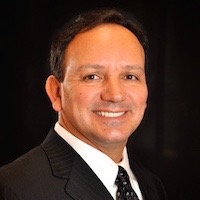Tag Archives: insight
How to Leverage Your Past to Supercharge Your Future
Well, the dust is finally settling, and the holiday decorations are (almost) packed up and put away for next year. For many, the holidays are a frenzied time – a rush to the finish line that has adrenaline spiking for days on end. Between running around trying to find the perfect gifts to sending out cards, preparing meals, entertaining family and friends and spending a lot of time around people we don’t often get to see, it can be exhausting.
Some of us were lucky enough to have a bit of down time before jumping back in to the excitement that the New Year brings. And others of us have simply been riding that wave that takes us from one activity to the next, with little time for transition. Though New Year’s Day has come and gone, it is never too late to take advantage of the demarcation that the end of one year and the beginning of another brings.
The turning of each year lends itself well to waxing reflective, calling to mind both the experiences in the past that have led us to the present moment, as well as what the future might hold – what magnificent things are bubbling up within us, just waiting to take form.
It’s curious that we often associate moments of reflection with major milestones (like a New Year), rather than as a continual process in our lives. Yet it’s easy to let the frenetic pace of business, the holidays, and personal affairs prevent us from enjoying the clarity of being alone with our thoughts, and even going beyond them into the silence of our own experience.
We get swept up in a kind of auto pilot mode, where we just do what is in front of us and go from one thing to the next, without a lot of thought.
But it is in the evaluation and reflection of our experiences that we receive insight – a vital gift that can become meaningful and empowering force in our lives.
Pressing on from one thing to the next without pausing long enough to integrate what we have learned deprives us of the gifts these experiences bring. It’s like finding a few wrapped presents with your name on them that were left behind in the festivities – and absentmindedly throwing them into a box instead of opening them up to see what’s inside.
Our experiences are uniquely designed to allow us to learn – about ourselves, others, and life itself. We learn about what works, what feels good, what doesn’t, who we are, what we are capable of, what we want more of (and less of too).
But only if we pause long enough to entertain the questions that allow us to unpack these gifts that are waiting to be opened.
If you have not yet afforded yourself the indulgence of conscious and intentional reflection, I encourage you to carve out some time to do so. Because the best goals, the best visions to move toward in the coming year will be those that align with the whispers of your heart – those that tap the infinite potential and wisdom that is already inside you. And you’ll never really know what those are until you take the time to go within and ask.
Below are some questions that can help you in this process. Some of these questions might seem more powerful to you than others – let yourself go where you are drawn with them. You may even want to take a quick look at them and then put them away and see what comes to you when your mind is empty of thoughts.
Or, you may scrap these questions and come up with different ones of your own. The important thing is to allow yourself the time to go within and listen with curiosity and earnestness.
QUESTIONS FOR YEAR-END REFLECTION
- As you reflect on this past year, what were your three or four most significant accomplishments, breakthroughs, and/or achievements?
- Looking back over the year, what (if anything) blocked or held you back as you moved toward your goals/objectives? How will you overcome those obstacles in the future?
- What were your biggest insights or realizations over the past year that you gained through your experiences?
- How will you apply what you learned this past year to what you want to create in the upcoming year?
- What are the top two or three things about your job/practice that you most want to be different this year?
- What two or three changes do you most want to see in your personal life?
- What significant challenges will face you this year? Personally? Professionally?
- What strengths will you rely on most to face the challenges that lie ahead?
- What qualities, skills, etc. could you develop within yourself to better arm you for the upcoming year?
- Picture yourself a year from now, looking back over the past year. What three or four accomplishments would you like to have achieved?
- What actions are you prepared to take to achieve your desired results for the upcoming year?
If you really want to supercharge your coming year, consider joining me and an intimate group of fellow leaders in the spring session of The Pinocchio Principle Unleashed: The Real Leader’s Guide to Accessing the Freedom & Flow of Your Authentic Genius, kicking off in April. This exclusive 13-week leadership development experience goes beneath the surface of what most programs deliver, to help you learn to unleash genius in yourself and those you lead.
Enrollment will be limited to eight participants. Join the waiting list to have access to registration before it opens to the public.
I look forward to another year ahead of navigating a path of discovery – one that will lead us all closer to our most precious goals, and allow us to make the most out of every experience we have – leaving everything we touch a little better off for the interaction – our teams, our customers, our colleagues, friends, family, and of course, ourselves.
Wishing you a wonderful and prosperous New Year ahead!
3 Vital Steps for Personal and Professional Transformation
Though the Halloween parties and trick or treaters have come and gone, as I wrote in my last post, 3 Fundamental Truths to Help You Become What You Most Admire, you can continue to enjoy the fun and intrigue of stepping into the version of yourself you most want to explore. Every day brings with it a fresh opportunity to transform in ways that allow you to create, achieve or experience a new way of living and leading – and become more of who you truly are.
But how do you get from here to there? Last week’s article was about how to overcome the mental barriers that can keep you from even entertaining the idea of dressing up to become a better you. This week we’ll explore what you can do to play in this new arena once you’ve made that critical decision to step into a whole new level of possibility.
(1) GET CLARITY ON WHAT YOU ARE MOVING TOWARD AND WHY
Creating a compelling vision can be daunting to some because it often leads people to think they need to know exactly what everything will look like and all (or many) of the steps they need to take to get there. But the beauty of having a vision is that you don’t need to have it all figured out. You just have to want it. And getting clarity on your vision is more a matter of tuning in than crafting something that doesn’t yet exist.
When you want to move toward something, whatever it is you desire already lives and breathes in your mind. While you may not be able to describe every nuance of what it will look or feel like, chances are there are aspects of it that are quite vivid in your imagination. The more time you spend and the more freedom you give yourself to play with that vision, the more it will flesh itself out.
Just as important as tuning into what the vision looks and feels like is strengthening your connection to WHY you want it. The more it speaks to your values and deepest desires, the more meaning your vision will have and the more it will fuel you with the energy necessary to bring it into reality. This leads us to the next step.
(2) LET YOUR VISION INFORM YOUR ACTIONS
Vision provides the guiding principle around which actions organize themselves. When you start from a powerful and compelling vision, the act of planning becomes much more organic and natural. You can start by asking yourself a few simple questions:
- What major milestones would I need to accomplish to make my vision a reality?
- What steps would I need to take to achieve each of these milestones?
- What actions or habits could I institute to enhance or speed my progress?
- What would I need to learn that I don’t already know, and how could I gain that knowledge?
- What, if anything, do I need to stop doing that could impede or derail my progress?
The answers to these questions may come like a downpour in a brainstorming session you have with yourself. They could also continue to drop in and reveal themselves slowly, over time. Your ability to receive and discern these answers will be greatly enhanced with the third vital step to personal and professional transformation.
(3) CREATE SPACE TO RECEIVE ONGOING INSIGHT
Often we are so busy moving from one thing to the next, and so preoccupied by thought that we fail to notice critical pieces of information, creative ideas and solutions that land softly in the corners of our minds. The noise in our heads has a way of drowning them out and the multitude of things in our line of sight obstructs our view.
There will never be a shortage of things competing for your attention. It is important to realize that just as you need not answer the phone every time it rings, you also do not need to allow your attention to be hijacked by everything that demands it. Instead, you can be intentional about what you allow to occupy your mind and consume your vital energy.
Creating space happens on both the physical and mental realms. Physical space is created when you block time on your calendar to work toward your vision and treat it with the same regard you would time with a client or other vital stakeholder. Mental space is created when you refuse to engage with thoughts that are bringing you down or clouding your optimism.
It is easy to believe that to make progress, you must quell your anxiety, overcome your resistance and turn negativity into positivity. But as I teach in The Pinocchio Principle Unleashed: The Real Leader’s Guide to Accessing the Freedom & Flow of Your Authentic Genius, when your thinking is in a low state, no amount of additional thinking will help. It only adds to the problem and blocks your innate creativity, ingenuity and resilience. You’ll likely feel bad about feeling bad, and throw yourself into an unnecessary (and easily avoided) downward thought spiral.
You don’t have to feel well to perform well. Thoughts come and go. When you resist the temptation to engage with thoughts that bring you down, they eventually pass in the same way water becomes clear when it settles. Sometimes the very act of doing things without thinking too much about them opens up new insights and leads you to do the very thing you worried you couldn’t – much more proficiently than you ever imagined.
Personal and professional transformation doesn’t need to be a heavy, serious endeavor. The most powerful visions are those that have us moving toward something we desire because we want it, but know that even if it didn’t come to pass, our innate well-being is not at stake.
There is nothing to fix and nothing to fear. So have some fun exploring the possibilities. The more you play at it, in much the same way you play at dressing up for Halloween, the less pressure you’ll put on yourself – and the more space you create for your transformation to occur.
For more on how to bring your grandest dreams and visions into reality, download my special report Why Real Leaders Don’t Set Goals (and what they do instead) and stay tuned for more tools, techniques and tips to come.
How to Find Peace in The Midst of Chaos (and why your future self will thank you)
If you stir muddy water, it will become murky and dark.
But if you allow the water to settle, the debris will eventually sink and you’ll be able to see more clearly.
The same is true of each of us.
There’s a lot to be stirred up about right now. And perhaps that’s why it’s more important than ever for us to find our calm.
Though our current Covid-19 response is leading us to drive less and stay home more, many of us are having difficulty finding places of peace and stillness. You might feel like you’re working more than ever, now that the lines between work and home are completely blurred.
Throw a kid or two into the mix whose routines (and lives) have been completely upended and you have a perfect mix for chaos.
And of course, there is the ever-present temptation to grab your phone or iPad or fire up the television to tune into the latest news or binge watch those shows on Netflix you’ve been wanting to see.
In addition to our external distractions there is the internal commotion of our never-ending thoughts, worries, and preoccupations.
It’s enough to make your head spin.
But perhaps there is hope amidst the chaos…
I recently read that for the first time in thirty years, the Himalayas are visible from northern India. Air quality has improved in several areas of the world, including right here in the United States. These improvements are said to largely be a product of the coronavirus response that has led to fewer emissions.
What if in addition to cleaning up our air we could find a way to clear our heads as well?
What if our future depended on it?
In such an unpredictable time as this, one thing is fairly certain: there is no more “business as usual”. Even after our social distancing and stay at home mandates have been lifted, things are likely to be different moving forward than they’ve ever been in the past.
Out of necessity, much of life as we’ve known it has had to change – often for the better. Many of the ways we have always done things will likely no longer be effective (or even relevant).
We have the opportunity to reinvent ways of working and being that weren’t serving us all that well and chart a new course into our future.
Now more than ever, we must cultivate the insight necessary to know what we need to do next.
And insight is a product of slowing down, quieting our minds and tuning in to ourselves and each other. It requires us to cut through the noise and create space for new ideas to land.
The best way to do that is to practice presence.
What exactly is presence?
The word present derives from the Latin past participle praesse meaning “to be before one”, from the roots pra – pre + esse – to be.
Presence is a state of being that’s achieved when we are truly in the moment, allowing it to unfold without judging it, labeling it, or getting lost in our thoughts about what it means or what we believe should be happening.
Presence allows us to cut through the clamor of our preoccupations, worries and fears so that our true selves can emerge. It is a gateway through which our intuition and inner wisdom enters and expresses itself.
A moment of presence is a state of grace that can produce great insights that help us to truly learn from our experiences, make the most of our opportunities and rise to our challenges in creative ways.
In moments of presence, we know who we really are and what we are truly capable of.
Have you ever noticed that people tend to match each other’s intensity and tone when they are together?
Comments about trivial matters are often matched with similar banter. Expressions of fear or dread often elicit responses that are equally charged, and expressions of anger have a way of provoking reactions that people later regret.
In a similar manner, moments of presence when shared with others can evoke powerful responses that can be revealing and transformational.
This is because when you are truly present with another human being you create a space that allows that person’s true self to come out as well.
This is why the best leaders have learned to become comfortable with silence. They listen more than they talk, and to allow themselves to become instruments that help others to recognize their own greatness – not necessarily through anything that say or do, but rather through moments of presence that are created and shared with others.
So how does one cultivate a moment of presence?
It is really rather simple, though far easier said than done.
1) The first step is to be still.
That’s right. Sit still. I know it goes against everything you were probably taught about getting things done and being useful. But do it anyway.
You can practice now, while you read this. Become aware of your breathing, of the space you are sitting in, of the weight of your body and how it feels in this moment. Feel the life inside you and trace it to each part of your body. Listen to the sounds around you. Take a deep breath. Let it out slowly.
2) Become aware of your thoughts.
Observe the activity of your mind as it continues to process whatever is there – thoughts like, “this is silly, really – I have way too much to do to be sitting here, doing this…” and “I have to remember to call so and so back today,” and “What did my [boss, colleague, friend, etc.] mean when he/she said…”.
Recognize that you are not your thoughts, but rather the thinker of your thoughts. Simply watch them parade around, without getting sucked into them. Feel how much bigger you are than all of that. Continue to breathe it in.
3) There really is no step three.
Simply continue to repeat steps one and two, immersing yourself more deeply into the experience with each breath.
You don’t need to do this for an extended period of time, unless you want to. Often even a couple of minutes are sufficient to bring you to a more intense state of awareness and aliveness.
In these moments of presence, you will experience things on a different level – one that allows you to respond from a deeper, wiser part of yourself. And when you are with others, you will bring out that deeper, wiser part of them as well.
The wonderful thing about practicing presence is that it creates a fertile landing place for creativity and new ideas. The more often you do, the more frequently you may find yourself receiving inklings (often when you least expect them) about solutions to even the most confounding of problems.
Presence is incredibly powerful to practice with others as well, and a wonderful thing to engage in with the family members in your home (who you are likely seeing more of than ever before). The process is the same, except that you expand your awareness to take in the other person as well.
First, put your phone down. Turn off your IPad, computer, television and/or any other device that could potentially steal your attention and focus.
Then, look into the eyes of the person in front of you, and listen to what they are saying. But listen to what they are not saying as well.
Presence is more about being than doing. So, allow yourself to truly BE with another, devoid of judgments, labels, and agendas. When you listen from this place, you are like water to a thirsty plant, allowing others to open up and soak in needed nutrients.
And in this space, they may just find the answers they seek as well – not because you are giving them, but because you have created a space that is illuminating for everyone.
For more on practicing presence, cultivating insight, and reinventing the way you live and lead, check out The Pinocchio Principle Unleashed: The Real Leader’s Guide to Accessing the Freedom & Flow of Your Authentic Genius. Registration for the fall session will open soon (and if you join the waiting list, you’ll have first dibs on the limited seats that will become available).
Image by Gordon Johnson from Pixabay.



